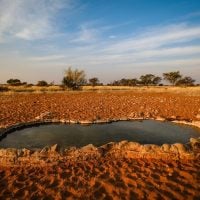Biodiversity is the cornerstone of a healthy ecosystem, providing essential services that sustain life on Earth. From the air we breathe to the food we eat, the intricate web of life is vital for our survival. However, human activities such as deforestation, pollution, and climate change have led to alarming rates of species extinction and habitat loss.
In response to this crisis, various funding opportunities have emerged to support biodiversity preservation efforts. Biodiversity preservation grants are financial resources provided by governments, private foundations, corporations, and international organizations aimed at protecting and restoring ecosystems and species. These grants are crucial for NGOs and community organizations that work tirelessly to conserve biodiversity.
They enable these entities to implement projects that can range from habitat restoration and species protection to community education and advocacy. Understanding the different types of grants available and how to access them can significantly enhance the capacity of organizations dedicated to biodiversity conservation. This article will explore various sources of funding for biodiversity preservation, providing actionable tips and real-world examples to help NGOs secure the necessary resources for their initiatives.
Government Grants for Biodiversity Conservation
Government Programs for Preserving Ecosystems and Wildlife
Government grants are a significant source of funding for biodiversity conservation projects. Many countries have established specific programs to preserve their unique ecosystems and wildlife. For example, the National Oceanic and Atmospheric Administration (NOAA) in the United States offers grants through its Coastal and Marine Habitat Restoration Program, which funds projects that restore coastal habitats critical for biodiversity.
Funding for Threatened and Endangered Species
Similarly, the U.S. Fish and Wildlife Service provides funding through its Endangered Species Program to support recovery efforts for threatened and endangered species.
Successfully Applying for Government Grants
To successfully apply for government grants, non-governmental organizations (NGOs) must be well-versed in the application process and eligibility requirements. It is essential to align project goals with government priorities, which often focus on specific species or habitats. For instance, if an organization aims to restore wetlands, it should emphasize how the project will benefit local wildlife and contribute to broader environmental goals. Building partnerships with local government agencies can also enhance credibility and increase the chances of securing funding.
Private Foundation Grants for Biodiversity Preservation
Private foundations play a pivotal role in funding biodiversity preservation initiatives. These organizations often have specific missions that align with conservation efforts, making them valuable partners for NGOs. For example, the Packard Foundation has a long-standing commitment to environmental conservation and has funded numerous projects aimed at protecting marine ecosystems and endangered species.
Similarly, the Gordon and Betty Moore Foundation supports innovative approaches to biodiversity conservation through its Environmental Conservation Program. When seeking private foundation grants, it is crucial for NGOs to conduct thorough research on potential funders. Understanding a foundation’s priorities, funding history, and application process can significantly improve the chances of success.
Crafting a compelling narrative that highlights the urgency of the project and its potential impact on biodiversity is essential. Additionally, showcasing previous successes or pilot projects can help demonstrate an organization’s capacity to effectively manage grant funds.
Corporate Grants for Biodiversity Conservation
Corporate grants represent another significant avenue for funding biodiversity conservation efforts. Many companies recognize their responsibility towards environmental stewardship and actively seek partnerships with NGOs to support conservation initiatives. For instance, companies like Coca-Cola have invested in watershed protection projects that aim to restore ecosystems while ensuring sustainable water use.
Similarly, tech giants like Google have funded projects focused on habitat restoration and wildlife protection. To attract corporate funding, NGOs should align their projects with the corporate social responsibility (CSR) goals of potential funders. This alignment not only enhances the appeal of a project but also fosters long-term partnerships that can lead to additional support in the future.
Engaging in meaningful dialogue with corporate partners about shared values and objectives can create a win-win situation where both parties benefit from the collaboration.
International Grants for Biodiversity Preservation
International grants are vital for addressing global biodiversity challenges that transcend national borders. Organizations such as the Global Environment Facility (GEF) provide funding for projects that aim to protect biodiversity in developing countries. The GEF supports initiatives that promote sustainable land management, protect marine ecosystems, and conserve endangered species across various regions.
Applying for international grants often requires a nuanced understanding of global biodiversity issues and the ability to collaborate with local stakeholders. NGOs should focus on building partnerships with local communities and governments to ensure that projects are culturally relevant and sustainable. Additionally, demonstrating how a project aligns with international agreements such as the Convention on Biological Diversity can strengthen an application’s case for funding.
Community-Based Grants for Biodiversity Conservation
Community-based grants are essential for empowering local communities to take charge of biodiversity conservation efforts in their regions. These grants often focus on grassroots initiatives that engage community members in protecting their natural resources. For example, organizations like the Small Grants Programme (SGP) by the United Nations Development Programme (UNDP) provide funding for community-led projects that promote sustainable practices while conserving biodiversity.
To successfully secure community-based grants, NGOs should prioritize community involvement from the outset. Engaging local stakeholders in project design ensures that initiatives are relevant and supported by those who will be most affected by them. Additionally, showcasing how a project will create economic opportunities or enhance community well-being can make a compelling case for funding.
Research and Education Grants for Biodiversity Preservation
Research and education are critical components of biodiversity preservation efforts. Grants aimed at supporting scientific research can help NGOs gather essential data on species populations, habitat conditions, and ecosystem health. Organizations like the National Science Foundation (NSF) offer funding opportunities for research projects that contribute to our understanding of biodiversity and inform conservation strategies.
Education grants also play a vital role in raising awareness about biodiversity issues among various audiences. Programs that focus on environmental education can empower individuals to take action in their communities. For instance, the Environmental Protection Agency (EPA) provides grants for educational initiatives that promote environmental stewardship among youth and adults alike.
When applying for research or education grants, NGOs should emphasize the potential impact of their work on biodiversity conservation. Collaborating with academic institutions or researchers can enhance credibility and provide access to additional resources. Furthermore, demonstrating how research findings or educational programs will be disseminated to broader audiences can strengthen an application’s appeal.
How to Apply for Biodiversity Preservation Grants
Navigating the grant application process can be daunting, but with careful planning and preparation, NGOs can increase their chances of success. The first step is to identify suitable grant opportunities that align with an organization’s mission and project goals. This involves thorough research into various funding sources, including government agencies, private foundations, corporations, and international organizations.
Once potential grants have been identified, NGOs should develop a clear and compelling proposal that outlines the project’s objectives, methodology, expected outcomes, and budget. It is essential to articulate how the project will contribute to biodiversity preservation while addressing any specific criteria set by the funder. Engaging stakeholders in the proposal development process can provide valuable insights and strengthen the overall application.
Additionally, NGOs should be prepared to provide supporting documentation such as letters of support from partners, evidence of previous successes, and detailed budgets. Following submission, maintaining communication with funders can help clarify any questions they may have about the proposal. In conclusion, securing biodiversity preservation grants requires a strategic approach that encompasses thorough research, compelling proposals, and strong partnerships.
By leveraging various funding sources—government grants, private foundations, corporate sponsorships, international aid, community-based initiatives, research opportunities, and educational programs—NGOs can enhance their capacity to protect our planet’s invaluable biodiversity for future generations.









































